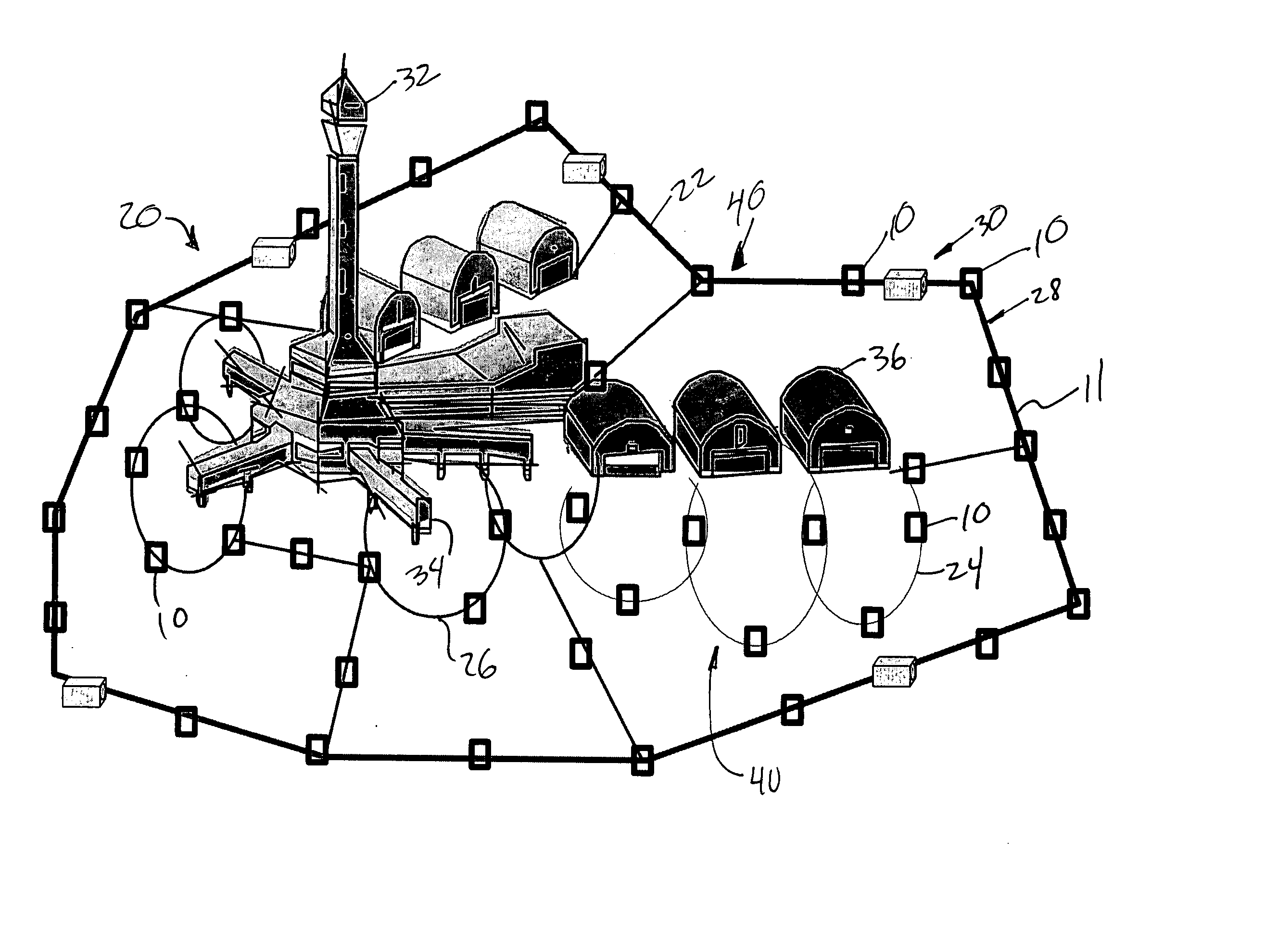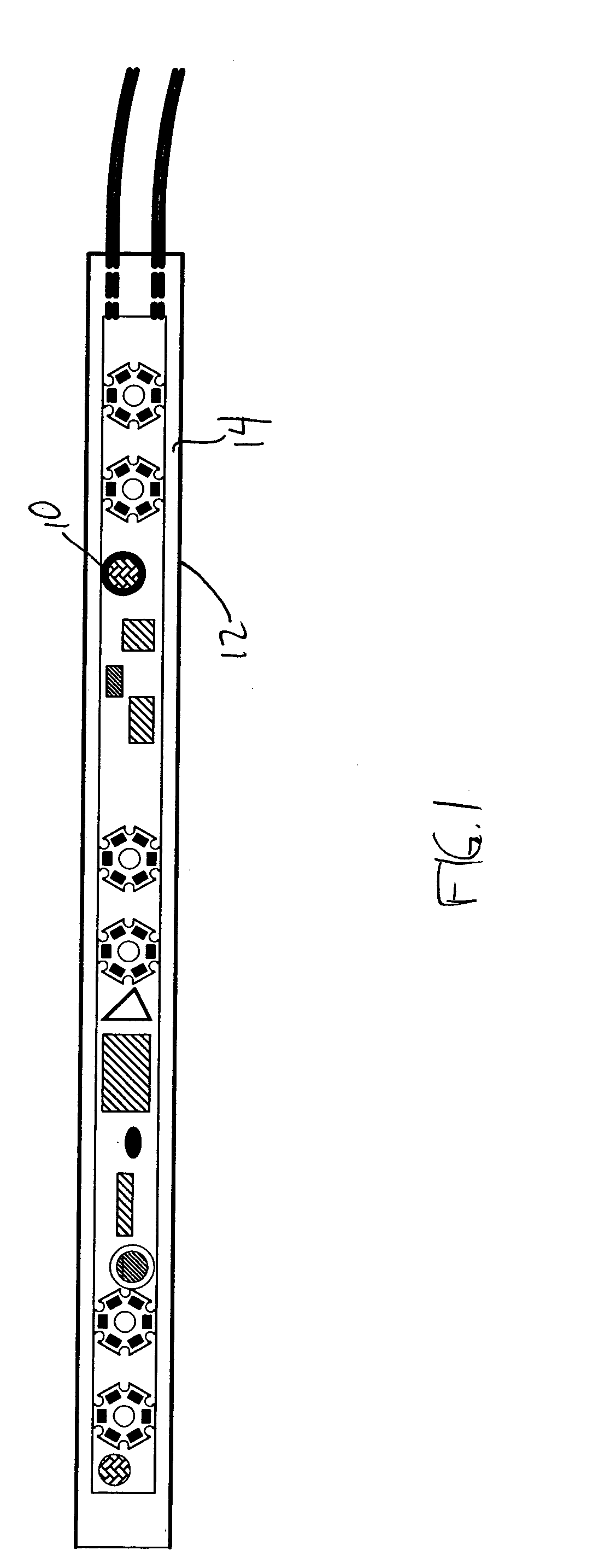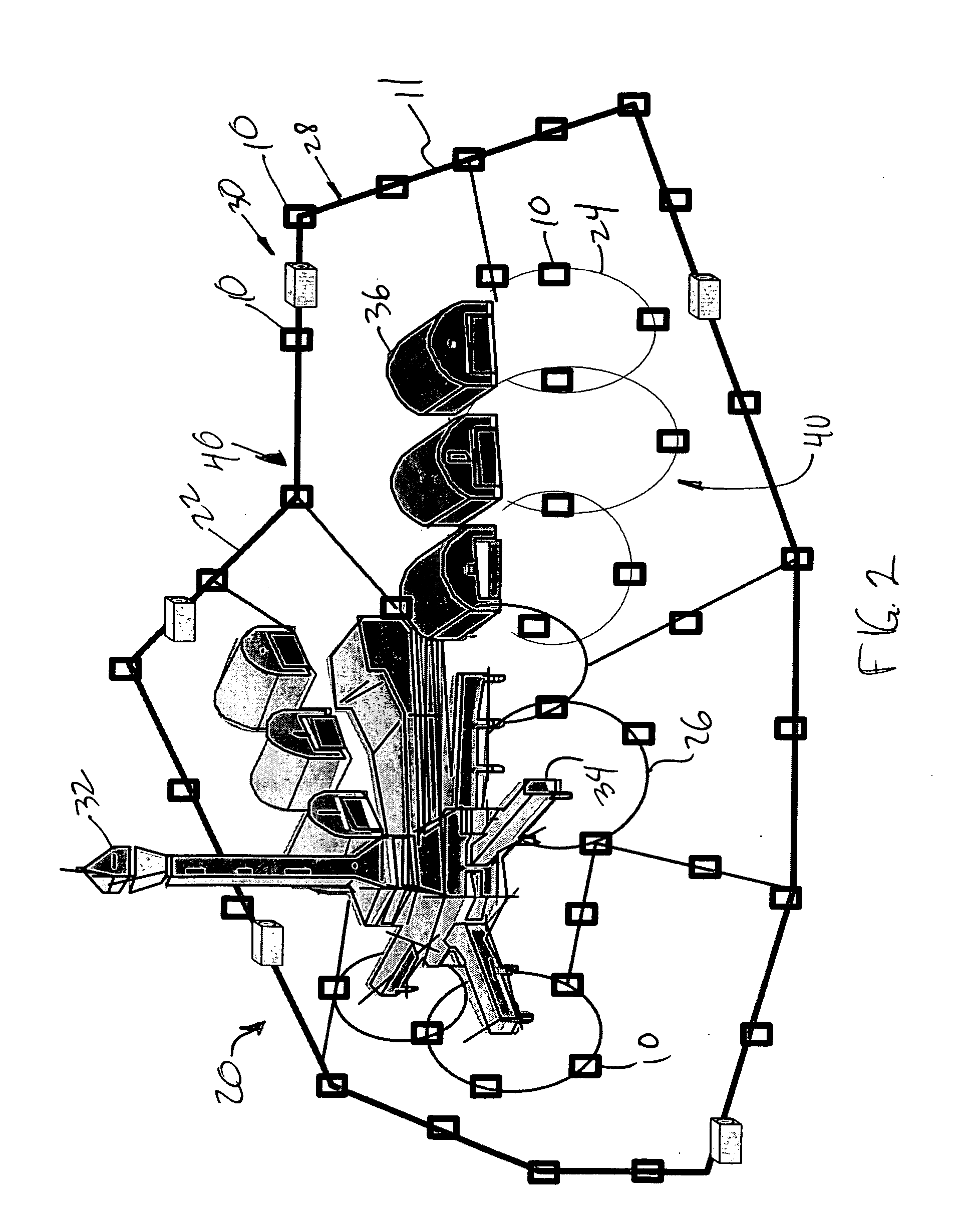Facilities management system
a technology of facilities management and management system, applied in the field of facilities management system, can solve the problems of gaining unauthorized access, reducing security, and reducing security, so as to increase security, increase management control and efficiency, and improve security
- Summary
- Abstract
- Description
- Claims
- Application Information
AI Technical Summary
Benefits of technology
Problems solved by technology
Method used
Image
Examples
Embodiment Construction
[0040]FIG. 1 illustrates one embodiment of an enclosure 12 including a read / write device 10 for use in the facilities management system according to this invention. The read / write device 10 is thus well adapted for use in stressful environments, such as roadways, waterways, landing strips, high traffic walkways, warehouses, and the like. When so deployed, the device 10 is preferably encapsulated and / or potted in the enclosure 12, enclosed or contained therein. The enclosure 12 may be a plastic housing or formed of another suitable material, with or without a gasket to provide a seal 14 to the enclosure or an extruded, cast, molded enclosure or the like.
[0041] The read / write device 10 functions as a tag sensor, which is an electronic device for sensing, reading, identifying and, optionally writing to a tag, such as a RFID tag (not shown). Other such electronic devices, which may be arranged on the enclosure 12, include transmitters, antennae, LEDs, and various other sensors as descr...
PUM
 Login to View More
Login to View More Abstract
Description
Claims
Application Information
 Login to View More
Login to View More - R&D
- Intellectual Property
- Life Sciences
- Materials
- Tech Scout
- Unparalleled Data Quality
- Higher Quality Content
- 60% Fewer Hallucinations
Browse by: Latest US Patents, China's latest patents, Technical Efficacy Thesaurus, Application Domain, Technology Topic, Popular Technical Reports.
© 2025 PatSnap. All rights reserved.Legal|Privacy policy|Modern Slavery Act Transparency Statement|Sitemap|About US| Contact US: help@patsnap.com



